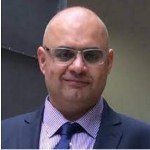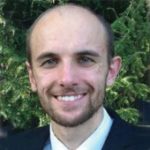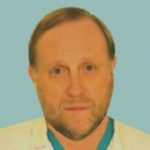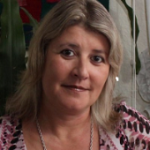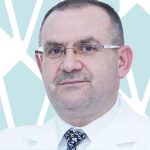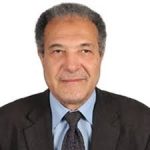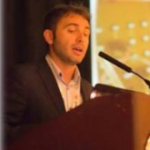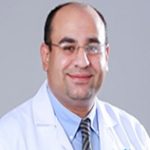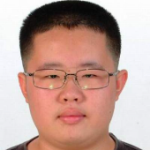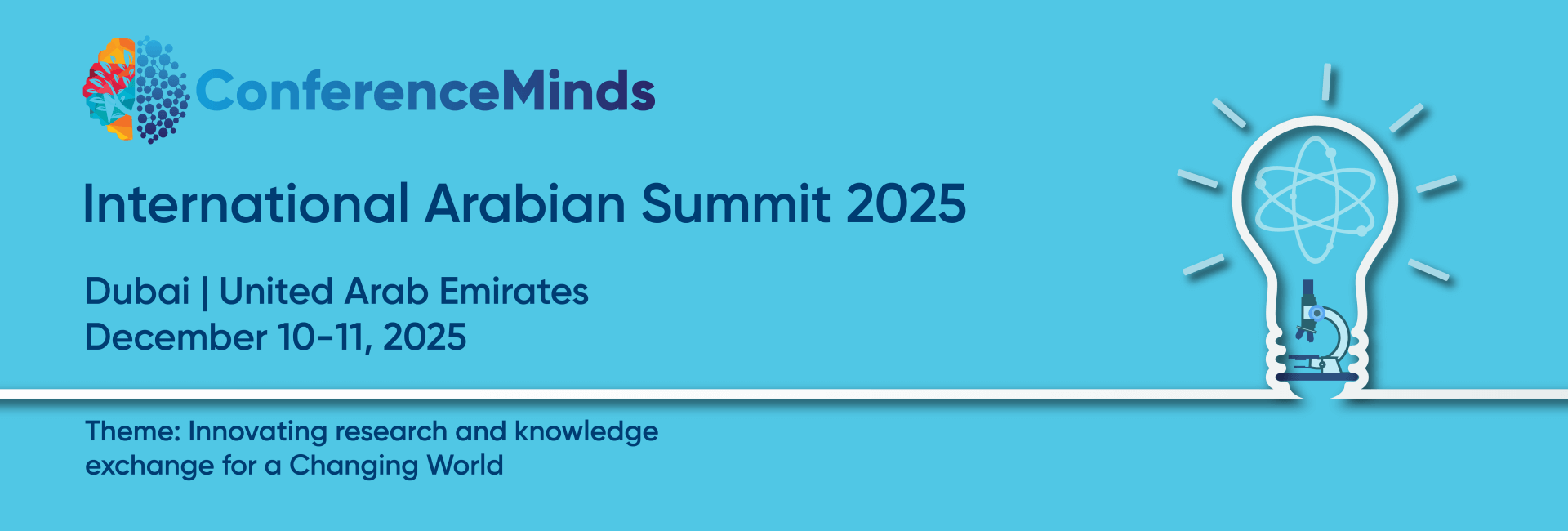
International Arabian Summit
ON
Complementary and Alternative Medicine
Event Date
December 10-11, 2025
Venue
Dubai, United Arab Emirates
– Previous Conference Performers / Professionals From Around The Globe –
Media Partners/Collaborator
A huge thanks to all our amazing partners. We couldn’t have a conference without you!
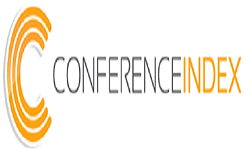
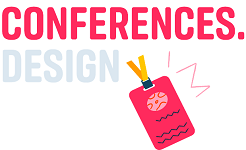
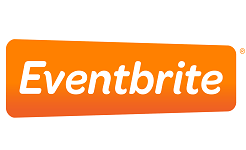
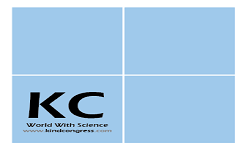



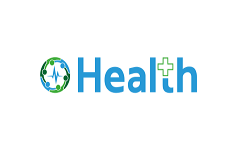
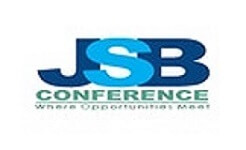

Sponsors/Exhibitors
A huge thanks to all our amazing partners. We couldn’t have a conference without you!


Alternative Medicine 2025
The International Arabian Summit on Complementary and Alternative Medicine, to be held on December 10–11, 2025, in Dubai, United Arab Emirates, will serve as a premier gathering for practitioners, researchers, healthcare professionals, policy-makers, and wellness experts dedicated to exploring the science, practice, and integration of complementary and alternative medical systems. This transformative summit will delve into key areas including herbal medicine, acupuncture, Ayurveda, traditional Chinese medicine, homeopathy, naturopathy, mind-body therapies, integrative oncology, and evidence-based approaches to holistic healing. With an emphasis on bridging traditional wisdom and modern science, the event will feature keynote presentations, clinical case studies, research sessions, panel discussions, and practical workshops. Held in the globally connected city of Dubai, this summit offers an ideal setting for fostering cross-cultural exchange and advancing global understanding of CAM practices. We warmly invite all speakers, researchers, practitioners, and delegates to register early and reserve their place at this unique event that aims to redefine health and wellness through integrative and alternative medical approaches.
Traditional Med 2025 offers a platform for open discussions, knowledge sharing, and interactive sessions with field experts. The event will feature keynote speeches, workshops, panel sessions, poster presentations, and discussions on the latest research trends in traditional and complementary medicine.
Expect to engage with representatives from around the world, including keynote speakers and oral presenters, as well as student participants. The conference will cover various topics such as Herbal Medicine, Acupuncture, Holistic Medicine, Yoga, Ayurveda, and many others.
By attending the Traditional Medicine Conference, you will:
- Learn in a new environment conducive to intellectual exchange.
- Meet experts and influencers in the field.
- Benefit from lectures by active practitioners.
- Gain insights into novel research techniques.
- Attend keynote forums led by prominent professors, doctors, and practitioners.
- Enhance your understanding of market trends and industry statistics.
- Expand your professional network.
- Explore unique opportunities to exhibit or sponsor the conference.
- Participate in open discussions, knowledge sharing, and interactive sessions.
- Witness poster presentations by young researchers
Session and Tracks
- Track 1: Medicinal Plant and Products: Medicinal plants, also known as medicinal herbs, have been integral to traditional medical treatments for millennia. These natural remedies, derived from various parts of plants such as leaves, flowers, roots, and stems, have been utilized with minimal side effects for healing purposes. Despite their informal usage over centuries, the effectiveness of these plant products remains significant. Efforts by the World Health Organization (WHO) through the International Regulatory Cooperation for Herbal Medicines aim to enhance the quality and credibility of medicinal plant-based products.
- Mind and Body Therapy
- Aroma Therapy
- Nutritional Medicines
- Medicinal Herbs and Fungi
- Herbal Food and Flavours
- Traditional Plant-Based Medicines
- Five Phases theory
- Tongue and pulse
Track 2: About Traditional Medicines and Disciplines
Traditional Medicine, encompassing various indigenous and folk practices, predates modern medicine and offers insights into cultural beliefs and experiences related to health and wellness. Practices like Traditional European Medicine, Traditional Chinese Medicine, and Ayurveda continue to play vital roles in healthcare, especially in certain regions where they are relied upon for primary healthcare needs.
-
- Ethnobotany
- Ethnomedicine
- Medical Anthropology
- Five Phases theory
- Tongue and pulse
- Cupping
- Mythical origins
Track 3: Phytochemistry and Traditional Medicines
Phytochemistry, the study of plant-derived chemicals, is crucial in understanding the therapeutic properties of traditional medicines. Techniques like extraction and chromatography aid in isolating and identifying these bioactive compounds, contributing to pharmacognosy and drug discovery. Advancements in technologies such as plant barcoding and principal component analysis further enhance the evidence base for the efficacy and safety of traditional medicines.
-
- Pharmacognosy
- Pharmacological Activity
- Phytochemicals
- Phytochemicals with nutraceutical importance
- Antioxidant Phytochemicals
- Nutrigenomics
Track 4: Indigenous and Tribal Medicines
Indigenous and tribal medicines, often referred to as ethnomedicine, offer invaluable insights into natural healing practices passed down through generations. These traditional remedies, primarily derived from plants, hold significant potential for drug discovery and development. With a rich empirical knowledge base, they serve as a foundation for innovative therapeutic interventions.
-
- Traditional African Medicines
- Traditional Mexican Medicines
- Traditional Chinese Medicines
Track 5: Unani Medicines
Unani Medicine, originating from Greek tradition and widely practiced in South Asia and Central Asia, employs a holistic approach to healing. Utilizing herbs, minerals, and indigenous remedies, Unani practitioners emphasize individualized treatment based on diagnosis. This system underscores the importance of diet, lifestyle, and herbal remedies in restoring health and balance.
-
- Basic Principles of Unani Medicines
- Herbs and Healing
- Safety Considerations
- Research in Unani Medicines
- Behavioral Medicine
- The Seven Components of Unani Medicine
Track 6: Ayurveda
Ayurveda, originating from ancient Indian civilization, offers a comprehensive system of healthcare focusing on harmonizing mind, body, and spirit. With principles deeply rooted in natural elements and energies, Ayurveda emphasizes personalized treatments, including yoga, meditation, and herbal remedies, to promote overall well-being and longevity.
-
- Yoga Therapy
- Mudras in Yoga
- Chakras in Yoga
- Sanskrit and Samhita
- Dravyaguna (Pharmacology)
- Associated supportive therapies
Track 7: Homeopathy
Homeopathy, guided by the principle of treating “like with like,” offers a holistic approach to healing without adverse side effects. With a vast array of remedies derived from natural sources, homeopathy addresses individual symptoms to stimulate the body’s innate healing mechanisms. Its safety and efficacy have garnered attention, even from prominent figures like Queen Elizabeth II.
-
- Preparation and Treatment
- Proving of Homeopathic Medicines
- Active Constituents in Pills
- Electrohomeopathy
- Homeoprophylaxis
- Homeopathic Vaccines
Track 8: Naturopathy
Naturopathy, focusing on natural healing modalities, advocates for lifestyle modifications, dietary interventions, and herbal remedies to support the body’s innate healing capacity. Though considered pseudoscientific by some, naturopathy emphasizes holistic wellness and preventive care through non-invasive approaches.
-
- Modern Day Naturopathy
- Antecedent of Naturopathy
- Concurrent Methods of Naturopathy
- Treatment Process
- The Origins of Naturopathy
- Naturopathic Drugs
Track 9: Siddha Medicine
Siddha Medicine, originating in South India and Sri Lanka, emphasizes the balance of diet, lifestyle, and natural remedies to maintain health and treat diseases. With its roots in ancient practices and astha siddhis (eight supernatural powers), Siddha Medicine underscores the interconnectedness of mind, body, and spirit.
-
- Yoga and Meditation
- Diet
- Lifestyle
Track 10: Acupuncture
Acupuncture, a cornerstone of Traditional Chinese Medicine, offers pain relief and therapeutic benefits through the strategic insertion of thin needles into specific points on the body. Widely practiced for various ailments, acupuncture’s efficacy is supported by centuries of empirical evidence and modern research.
-
- Japanese Style Acupuncture
- Korean Style Acupuncture
- Medical Acupuncture
- Cupping Therapy
- Policy and Guidelines
Track 11: Chinese Traditional Medicines
Traditional Chinese Medicine, with its holistic approach and emphasis on balance (Yin and Yang), offers a diverse range of therapies, including herbal medicine, acupuncture, and dietary therapies. Rooted in ancient philosophy, Chinese Medicine continues to evolve, integrating modern scientific principles with traditional wisdom.
-
- Dietary Therapies
- Chinese Food Therapies
- Acupressure
- Folk Medicine
- Eight principles of diagnosis
- Chinese Herbal Therapy
Track 12: Chiropractic and Osteopathic Medicine
Chiropractic and Osteopathic Medicine provide nonsurgical treatments for musculoskeletal issues, emphasizing spinal adjustments and joint mobilization to alleviate pain and restore function. These manual therapies offer alternatives to conventional medicine, particularly for conditions like back pain and joint dysfunction.
-
- Lumbar roll
- Motion palpation
- Instrument Adjustments
- Counterstrain
Track 13: Yoga & Meditation
Yoga and Meditation, rooted in ancient traditions, promote holistic well-being by integrating physical postures, breathwork, and mindfulness practices. Beyond physical exercise, yoga fosters mental clarity, emotional balance, and spiritual growth, contributing to overall health and vitality.
-
- The traditional way of healing
- Classical yoga
- Ashtanga yoga
- Herbal massage
- Medical Therapies
- Holistic Therapies
Track 14: Uses of Traditional Medicine For AIDS
The utilization of traditional medicine, including herbal remedies, in managing HIV/AIDS underscores the global reliance on natural therapies for healthcare. With millions turning to traditional remedies for primary healthcare, the integration of herbal medicine with conventional treatments offers promising avenues for managing symptoms and enhancing quality of life.
-
- Regional use of natural remedies
- Pharmacology and Pharmacokinetics
- Antiretroviral therapy
- Reflexology
Track 15: Pharmacognosy and Phytotherapy
Pharmacognosy, the study of biogenic pharmaceuticals derived from natural sources, plays a crucial role in drug discovery and development. Phytotherapy, focusing on the clinical application of herbal medicines, bridges traditional knowledge with modern pharmacological principles, offering safe and effective treatment options.
-
- Important natural products and phytomedicines
- Application of Pharmacognosy
- Ethnopharmacology
- Quality herbal medicine used in phytotherapy
Track 16: Traditional Korean Medicine
Traditional Korean Medicine, rooted in ancient practices and influenced by Chinese Medicine, offers unique therapeutic approaches such as Sasang constitutional medicine. With a focus on natural treatments and personalized care, Traditional Korean Medicine continues to evolve, integrating modern scientific advancements with traditional wisdom.
-
- Situation and future direction of TKM
- Clinical characteristics of Korean Medicine
- Atopic dermatitis in Korean medicine
- Korean herbal medicine product
- Moxibustion
Track 17: Future of Traditional Medicine
The future of traditional medicine hinges on addressing regulatory, safety, and efficacy concerns while harnessing its potential for global health. With increasing popularity and demand for natural remedies, there is a growing need for standardized practices, clinical trials, and integration with conventional medicine to ensure optimal healthcare outcomes.
-
- Regulation of traditional medicine
- Safety issues
- Need for clinical trials
- Status of Herbal medicine in India
Track 18: Neutraceuticals and Herbal Cosmetics
Neutraceuticals, offering health benefits beyond nutrition, and herbal cosmetics, harnessing plant-derived ingredients for skincare, represent burgeoning sectors in natural product industries. With a focus on bioactive compounds and natural formulations, these products cater to a growing demand for holistic wellness and beauty solutions.
-
- Herbal cosmetics
- Phytopharmaceuticals
- Biofertilizer ingredients
- Natural cosmetics
Track 19: Sports Medicine
Sports Medicine, encompassing various therapies and interventions for athletes, emphasizes physical fitness, injury prevention, and rehabilitation. Modalities like chiropractic care and osteopathic manipulation offer non-invasive approaches to managing musculoskeletal issues, promoting optimal performance and recovery.
-
- Exercise medicine
- Public health
- Common sports injuries
Track 20: Ethnopharmacology
Ethnopharmacology explores the use of medicinal plants within specific cultural contexts, offering insights into traditional healing practices and indigenous knowledge systems. By integrating chemical, biological, and pharmacological sciences, ethnopharmacology contributes to drug discovery and sustainable healthcare solutions.
-
- Ethnomedicine
- Ethnopharmacological perspectives
- Ethnopharmacology of traditional medicines
Track 21: Aspects of Complementary Medicines
Complementary Medicines, used alongside conventional treatments, offer diverse therapeutic options for holistic healthcare. While distinct from alternative medicine, complementary therapies like acupuncture and herbal remedies provide additional avenues for promoting wellness and managing health conditions.
-
- Supreme Source of New Drugs
- Increment In Plant Cultivation
- Future Primary Healthcare
- Phytochemistry
Track 22: Disciplines of Nursing in the field of Allopathy Homeopathy and Ayurvedic
Nursing disciplines encompass various healthcare systems, including Allopathy, Homeopathy, and Ayurvedic medicine. Nurses play critical roles in patient care, emphasizing evidence-based practice and interdisciplinary collaboration across different medical traditions to ensure optimal health outcomes and patient safety.
-
- Geriatric Nursing and Elderly Care
- Surgical Nursing
- Registered Nurse
- Critical Care and Emergency Nursing
- Transitional Care Nursing
- Nursing Education
- Women Health Nursing
- Nurse Practitioners
- Cancer Nursing Care
- Cardiac Nursing
Market Analysis
- Complementary and Alternative Medicines (CAM) represent a diverse range of therapeutic approaches and products that are used alongside or instead of conventional medical treatments. The global CAM market has experienced significant growth in recent years, driven by several key factors:
- Increasing Consumer Demand: Growing awareness and acceptance of natural and holistic healthcare options have fueled the demand for CAM therapies and products worldwide. Consumers are seeking alternatives to conventional medicine for various health conditions, driving the expansion of the CAM market.
- Prevalence of Chronic Diseases: The rise in chronic diseases such as diabetes, cardiovascular disorders, and cancer has led individuals to explore complementary therapies to manage symptoms and improve overall well-being. CAM modalities offer non-invasive and holistic approaches to addressing chronic health issues.
- Shift Towards Preventive Healthcare: There is a growing emphasis on preventive healthcare and wellness promotion, driving the adoption of CAM practices such as yoga, meditation, and dietary supplements. CAM therapies are perceived as proactive measures to maintain health and prevent disease.
- Integration with Conventional Medicine: Increasing recognition of the potential benefits of integrating CAM with conventional medical treatments has led to greater acceptance and adoption by healthcare providers and institutions. This integration has expanded the market reach of CAM therapies and enhanced their credibility.
- Expanding Research and Evidence Base: The CAM industry has witnessed an increase in research initiatives aimed at validating the efficacy and safety of various complementary therapies. Clinical studies and scientific research are providing evidence to support the use of CAM modalities, boosting consumer confidence and market growth.
- Technological Advancements: Technological advancements have facilitated the development of innovative CAM products and delivery systems, enhancing accessibility and convenience for consumers. Digital platforms and mobile applications offer resources for education, consultation, and access to CAM services.
- Regulatory Frameworks and Quality Standards: Regulatory bodies and healthcare authorities are increasingly establishing guidelines and quality standards for CAM products and practitioners. This regulatory oversight enhances consumer trust and confidence in the safety and efficacy of CAM therapies, driving market growth.
- Globalization and Market Expansion: CAM practices and products are gaining popularity beyond their traditional regions, driven by globalization and cross-cultural exchange. This expansion of the global CAM market presents opportunities for market players to diversify their offerings and reach new consumer segments.
Despite the significant growth prospects, the CAM market faces several challenges, including:
-
- Regulatory Hurdles: Variations in regulatory frameworks and standards across different countries pose challenges for market access and product compliance.
- Safety Concerns: Some CAM therapies may lack robust scientific evidence or have potential safety risks, leading to skepticism and regulatory scrutiny.
- Integration Barriers: Resistance from conventional healthcare providers and institutions to integrate CAM into mainstream medicine can limit market penetration and acceptance.
- Market Fragmentation: The CAM market is highly fragmented, with a wide range of therapies and products, making it challenging for consumers to navigate and evaluate options.
- Limited Insurance Coverage: Limited insurance coverage for CAM therapies and products may deter some consumers from accessing these services, particularly in regions where reimbursement policies are restrictive.
In conclusion, the global CAM market is poised for continued growth, driven by increasing consumer demand, integration with conventional medicine, expanding research efforts, and technological advancements. However, addressing regulatory challenges, ensuring safety and efficacy, promoting integration, and enhancing market accessibility will be crucial for sustaining growth and maximizing the potential of complementary and alternative medicines worldwide.
– Tracks & Key Topics –
- Complementary Medicine
- Holistic nutrition
- Chiropractic Technique
- Pharmacognosy
- Indigenous Healing Practices
- Traditional Chinese Medicine (TCM)
- Traditional Medicine Practices and Innovations
- Alternative Therapies for Chronic Conditions
- Nutritional Therapy and Dietary Approaches
- Chiropractic and Bodywork Therapies
- Herbal Medicine and Botanical Therapies
- Acupressure
- Acupuncture
- Acupuncturist
- Alternative Healing Practices
- Alternative Medicine
- Ancient Healing Techniques
- Aromatherapist
- Aromatherapy
- Ayurveda
- Ayurvedic Healing
- Ayurvedic Massage
- Ayurvedic Practitioner
- Ayurvedic Therapist
- Bach Flower Remedies
- Bioenergetic Healing
- Biofeedback
- Biofeedback Therapist
- Biofield Therapy
- Bowen Therapy
- Chakra Healing
- Chinese Herbal Medicine
- Chiropractic
- Chiropractor
- Color Therapy
- Complementary Medicine
- Craniosacral Therapy
- Crystal Healer
- Crystal Healing
- Crystal Therapy
- Cultural Healing Traditions
- Cupping
- Cupping Therapy
- Dietary Supplements
- Eastern Medicine
- Emotional Freedom Technique (EFT)
- Energy Healer
- Energy Healing
- Energy Medicine
- Energy Work
- Ethnobiology
- Ethnobotanical Research
- Ethnobotany
- Ethnomedicine
- Ethnopharmacological Research
- Ethnopharmacological Studies
- Ethnopharmacology
- Folk Medicine
- Functional Medicine
- Functional Medicine Practitioner
- Gua Sha
- Healing Herbs
- Healing Touch
- Herbal Medicine
- Herbal Medicine Associations
- Herbal Medicine Books
- Herbal Medicine Certification
- Herbal Medicine Conferences
- Herbal Medicine Courses
- Herbal Medicine Degrees
- Herbal Medicine Festivals
- Herbal Medicine Practitioner
- Herbal Medicine Practitioners
- Herbal Medicine Programs
- Herbal Medicine Research
- Herbal Medicine Research Institutes
- Herbal Medicine Retreats
- Herbal Medicine Schools
- Herbal Medicine Symposiums
- Herbal Medicine Workshops
- Herbal Remedies
- Herbal Supplements
- Herbal Therapy
- Herbalism
- Herbalism Courses
- Herbalist
- Holistic Healing
- Holistic Healing Modalities
- Holistic Health
- Holistic Health Practices
- Holistic Medicine
- Holistic Medicine Practitioner
- Holistic Medicine Schools
- Holistic Nutrition
- Holistic Nutritionist
- Holistic Therapy
- Homeopath
- Homeopathic Medicine
- Homeopathic Remedies
- Homeopathy
- Hypnotherapy
- Naturopathic Medicine
- Naturopathy
- Osteopathy
- Plant-based Medicine
- Plant-based Therapies
- Pranayama
- Pranic Healing
- Qi Gong
- Qigong
- Quantum Healing
- Reconnective Healing
- Reflexologist
- Reflexology
- Reiki
- Reiki Healing
- Reiki Practitioner
- Reiki Therapy
- Ritual Healing
- Shaman
- Shamanism
- Shiatsu
- Sound Healing
- Sound Therapist
- Sound Therapy
- Tai Chi
- Tai Chi Chuan
- Tai Chi Instructor
- Traditional African Medicine
- Traditional Chinese Medicine (TCM)
- Traditional Chinese Medicine Practitioner
- Traditional Healer
- Traditional Healers
- Traditional Healing Rituals
- Traditional Healing Systems
- Traditional Japanese Medicine
- Traditional Korean Medicine
- Traditional Korean Medicine (TKM)
- Traditional Medicine
- Traditional Medicine Associations
- Traditional Medicine Centers
- Alternative Medicine
- Acupuncture
- Ayurveda Medicine
- Unani System of Medicine
- Aromatherapy
- Photochemistry
- Modern Pharmacognosy
- Traditional Medicine
- Mind Therapies
- Current Research in Alternative Medicine
- Naturopathic Medicine
- Natural product development
- Ayurveda Medicine
- Unani System of Medicine
- Aromatherapy
- Photochemistry
- Modern Pharmacognosy
- Traditional Medicine
- Mind Therapies
- Current Research in Alternative Medicine
- Naturopathic Medicine
- Natural product development
- Complementary Medicine
- Holistic nutrition
- Chiropractic Technique
- Pharmacognosy
- Indigenous Healing Practices
- Traditional Chinese Medicine (TCM)
- Traditional Medicine Practices and Innovations
- Alternative Therapies for Chronic Conditions
- Nutritional Therapy and Dietary Approaches
- Chiropractic and Bodywork Therapies
- Herbal Medicine and Botanical Therapies
- Acupressure
- Acupuncture
- Acupuncturist
- Alternative Healing Practices
- Alternative Medicine
- Ancient Healing Techniques
- Aromatherapist
- Aromatherapy
- Ayurveda
- Ayurvedic Healing
- Ayurvedic Massage
- Ayurvedic Practitioner
- Ayurvedic Therapist
- Bach Flower Remedies
- Bioenergetic Healing
- Biofeedback
- Biofeedback Therapist
- Biofield Therapy
- Bowen Therapy
- Chakra Healing
- Chinese Herbal Medicine
- Chiropractic
- Chiropractor
- Color Therapy
- Complementary Medicine
- Craniosacral Therapy
- Crystal Healer
- Crystal Healing
- Crystal Therapy
- Cultural Healing Traditions
- Cupping
- Cupping Therapy
- Dietary Supplements
- Eastern Medicine
- Emotional Freedom Technique (EFT)
- Energy Healer
- Energy Healing
- Energy Medicine
- Energy Work
- Ethnobiology
- Ethnobotanical Research
- Ethnobotany
- Ethnomedicine
- Ethnopharmacological Research
- Ethnopharmacological Studies
- Ethnopharmacology
- Folk Medicine
- Functional Medicine
- Functional Medicine Practitioner
- Gua Sha
- Healing Herbs
- Healing Touch
- Herbal Medicine
- Herbal Medicine Associations
- Herbal Medicine Books
- Herbal Medicine Certification
- Herbal Medicine Conferences
- Herbal Medicine Courses
- Herbal Medicine Degrees
- Herbal Medicine Festivals
- Herbal Medicine Practitioner
- Herbal Medicine Practitioners
- Herbal Medicine Programs
- Herbal Medicine Research
- Herbal Medicine Research Institutes
- Herbal Medicine Retreats
- Herbal Medicine Schools
- Herbal Medicine Symposiums
- Herbal Medicine Workshops
- Herbal Remedies
- Herbal Supplements
- Herbal Therapy
- Herbalism
- Herbalism Courses
- Herbalist
- Holistic Healing
- Holistic Healing Modalities
- Holistic Health
- Holistic Health Practices
- Holistic Medicine
- Holistic Medicine Practitioner
- Holistic Medicine Schools
- Holistic Nutrition
- Holistic Nutritionist
- Holistic Therapy
- Homeopath
- Traditional Medicine Certification
- Traditional Medicine Clinics
- Traditional Medicine Conferences
- Traditional Medicine Databases
- Traditional Medicine Degrees
- Traditional Medicine Documentaries
- Traditional Medicine Education
- Traditional Medicine Exhibitions
- Traditional Medicine Forums
- Traditional Medicine Journals
- Traditional Medicine Knowledge
- Traditional Medicine Museums
- Traditional Medicine Networks
- Traditional Medicine Organizations
- Traditional Medicine Practices
- Traditional Medicine Practitioners
- Traditional Medicine Publications
- Traditional Medicine Remedies
- Traditional Medicine Research
- Traditional Medicine Research Centers
- Traditional Medicine Retreats
- Traditional Medicine Schools
- Traditional Medicine Seminars
- Traditional Medicine Symposiums
- Traditional Medicine Therapies
- Traditional Medicine Training

